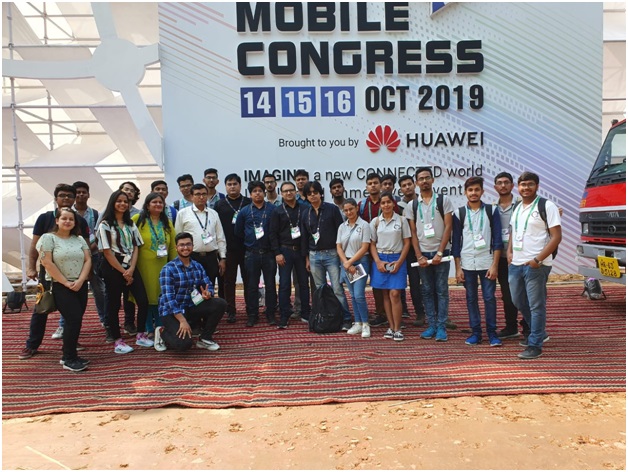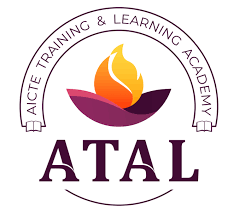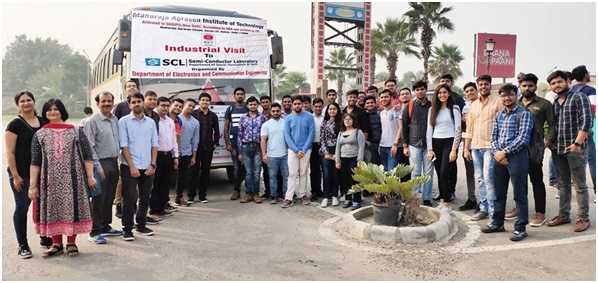India Mobile Congress 2019
Bang in the middle of TechTober, MAIT Students and Faculty organized a day long excursion to *India Mobile Congress 2019* , the flagship tech expo of South East Asia Organized by the Department of Telecommunications (DoT) and Cellular Operator Association of India (COAI) held at *Aerocity, Delhi from the 14th to 16th October. *5G* was unquestionably the epicenter of the industry's adulation, owing to the next generation of telecom being at the helm of commercial rollout in India.
Delegates were elated to explore stands by the likes of Ericsson and Huawei. *The Telecom Trifecta: Vodafone-Idea, Airtel and Reliance Jio* made their presence felt by showcasing their innovations and know-how of 5G, ahead of the trials and spectrum auctions. Nonetheless, *IoT, AR and VR* also shared the spotlight, with established conglomerates and ambitious startups demonstrating their attractions and concepts under one roof.
The participation of students in the event was organized by Mr. Gopal Mittal, Sr. Director – Commercial and Finance and co-ordinated by Prof. Neelam Sharma, Director MAIT. The three day event was co-ordinated by MAIT faculty members Dr.Nitin Sharma, Dr. Monika Gupta. Around 455 students and 50 faculty members of four department of MAIT visited the different start ups based on 5G technology and also attended the seminars in main hall.Students gained their fair share of field experience by acquainting themselves to *VR Soccer, Connected Mobility from the likes of MG and Kia*, and the emerging concept of *Smart Cities* to transform the way of living in the urban jungle.The festivities only escalated with the convergence of the entire IT industry, as stalwarts like *Mr. KM Birla, Chairman, Aditya Birla Group and Manu Kumar Jain, CEO, Xiaomi India* spoke on the use cases and untapped potential of all these breakthrough technologies.Furthermore, *Hon'ble Union Minister for Communications and Information Technology, Mr. Ravi Shankar Prasad* also graced the event with his presence.
*Telecom Secretary Mr Anshu Prakash, IAS*, in a proud moment for the IT fraternity, listed Indias monumental achievements in the digital sector, while equally highlighting the tantalizing oppprtunities offered in the future. India Mobile Congress (IMC) 2019 saw a slew of launches with real use cases in the telecom sector, where the companies collaborated with each other to bring out the future innovations. Reliance Jio and Samsung presented new business opportunities using 5G NSA mode, with advanced 4G LTE and 5G technology used in combination as a dual-connected mode network.Reliance Jio and Samsung showcase 5G technology use cases at India Mobile Congress 2019. These will demonstrate how innovations from the latest technology can benefit consumers, enterprises and the society. Ericsson and Qualcomm Technologies also completed the first ever live 5G video call in India using 28 GHz spectrum. The demonstration was done using a smartphone based on the Snapdragon 855 Mobile Platform with Snapdragon X50 5G Modem-RF System and Ericsson’s 5G platform including 5G NR radio, RAN Compute products and 5G Evolved Packet Core, set up at the IMC venue.
The MillimeterWave (mmWave) 5G networks are commercial in the US and being rolled out in many advanced countries including Japan and Korea, where 28 GHz and 39 GHz spectrum bands are being considered for 5G deployments. For mobile networks, mmWave spectrum will be an important capacity layer for both 4G and 5G, the companies said.
To demonstrate, Nunzio Mirtillo Head of Ericsson South East Asia, Oceania and India, made a video call to Rajen Vagadia, Vice President, Qualcomm India at the venue. The companies have already worked closely to create several 5G technology.
“Ericsson was the first telecom vendor to demonstrate 5G technology in India in 2017. Over the past few years we have been working with several stakeholders to build the 5G ecosystem in the country. Today marks an important step in India’s journey towards 5G. This 5G video call and our longstanding collaboration with Qualcomm Technologies is a testament of how the real benefits of 5G can be achieved through partnerships and collaborations,” Mirtillo said.
Similarly, Nokia and Vodafone-Idea Business Services rolled out software-defined wide area network (SD-WAN) services for start-ups and enterprises in India. SD-WAN simplifies the management and operation of the enterprise’s network. While the SD-WAN market is still at a nascent stage, it is expected to become a $10 billion opportunity globally by 2023 as per industry reports.















